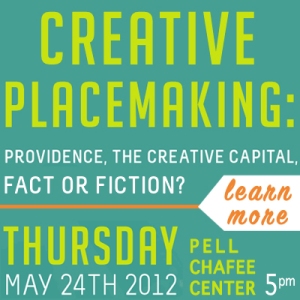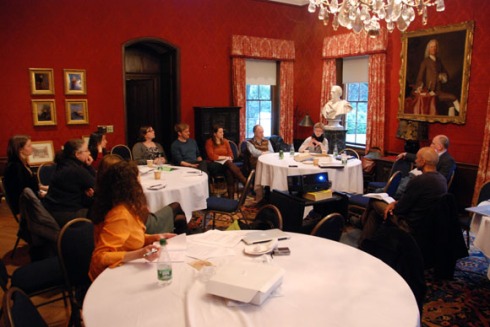From the NY Times
Published: January 6, 2012

Yann Arthus-Bertrand/Altitude - A sea of Green? A working lot at Disney World in Orlando, Fla.
THERE are said to be at least 105 million and maybe as many as 2 billion parking spaces in the United States.
A third of them are in parking lots, those asphalt deserts that we claim to hate but that proliferate for our convenience. One study says we’ve built eight parking spots for every car in the country. Houston is said to have 30 of them per resident. In “Rethinking a Lot,” a new study of parking, due out in March, Eran Ben-Joseph, a professor of urban planning at M.I.T., points out that “in some U.S. cities, parking lots cover more than a third of the land area, becoming the single most salient landscape feature of our built environment.”
Absent hard numbers Mr. Ben-Joseph settles on a compromise of 500 million parking spaces in the country, occupying some 3,590 square miles, or an area larger than Delaware and Rhode Island combined. If the correct number is 2 billion, we’re talking about four times that: Connecticut and Vermont.
Either way it’s a lot of pavement.
As the critic Lewis Mumford wrote half a century ago, “The right to have access to every building in the city by private motorcar in an age when everyone possesses such a vehicle is the right to destroy the city.” Yet we continue to produce parking lots, in cities as well as in suburbs, in the same way we consume all those billions of plastic bottles of water and disposable diapers.
What to do?
For starters we ought to take these lots more seriously, architecturally. Many architects and urban planners don’t. Beyond greener designs and the occasional celebrity-architect garage, we need to think more about these lots as public spaces, as part of the infrastructure of our streets and sidewalks, places for various activities that may change and evolve, because not all good architecture is permanent. Hundreds of lots already are taken over by farmers’ markets, street-hockey games, teenage partiers and church services. We need to recognize and encourage diversity. This is the idea behind Parking Day, a global event, around since 2005, that invites anybody and everybody to transform metered lots. Each year participants have adapted hundreds of them in dozens of countries, setting up temporary health clinics and bike-repair shops, having seminars and weddings.
That’s akin to the approach of an architecture and planning firm in Brooklyn called Interboro Partners. Several years ago it entered a competition in Los Angeles focused on dead shopping malls. Entrants picked malls they wanted to revive. Most contestants proposed erecting office parks or retirement homes or apartment buildings. Interboro took a different approach.
It chose the Dutchess County Mall in Fishkill, N.Y. Opened with fanfare in spring 1974 as another consumer paradise and symbol of automotive and suburban progress, it was built on the promising corner of a major highway interchange in the heart of a county poised for growth. But development ended up gravitating elsewhere, and by the early 1990s the mall was half-empty; by 1998 it was officially closed. To drivers passing it on Interstate 84 it looked like every other dead mall, floating in the usual asphalt sea of parking spaces.
But Interboro’s partners saw something else there: life.
Of course suburban and urban lots are not all the same, and it’s glib to say we should just buy fewer cars. Yes, we ought to wean ourselves from automobiles in favor of public transportation. We rely too much on cars because our public transit systems are often so abysmal. But cars aren’t going away anytime soon, certainly not in the suburbs or in cities like Los Angeles, and we can’t just wish away lots in which to park them. John Brinckerhoff Jackson, the landscape writer who died in 1996, years ago pleaded that the parking lot be treated like the city common, with its own community values.
But what does this entail? For big cities like New York it is high time to abandon outmoded zoning codes from the auto-boom days requiring specific ratios of parking spaces per housing unit, or per square foot of retail space. These rules about minimum parking spaces have driven up the costs of apartments for developers and residents, damaged the environment, diverted money that could have gone to mass transit and created a government-mandated cityscape that’s largely unused. We keep adding to the glut of parking lots. Crain’s recently reported on the largely empty garages at new buildings like Avalon Fort Greene, a 42-story luxury tower near downtown Brooklyn, and 80 DeKalb Avenue, up the block, both well occupied, both of which built hundreds of parking spaces to woo tenants. Garages near Yankee Stadium, built over the objections of Bronx neighbors appalled at losing parkland for yet more parking lots, turn out never to be more than 60 percent full, even on game days. The city has lost public space, the developers have lost a fortune.
The Pensacola Parking Syndrome is a term of the trade used to describe a city that tears down its old buildings to create parking spaces to entice more people downtown, until people no longer want to go there because it has become an empty lot. Cities should let the free market handle the construction of new parking spaces. People who buy or rent new homes can pay extra if they want someplace to park a car. Municipalities can instead cap the maximum number of lots or the ratio of spaces to dwellings and offices.
Back in 1973 Boston instituted a successful parking freeze in concert with the Environmental Protection Agency, an approach that Los Angeles attempted to follow until Congress blocked the tactic, bouncing the ball over to city courts. Since then Cambridge, Mass., has set its own limit on parking spaces. More cities could now do the same.
As for the perception that parking spots are hard to find, as if everyplace were Midtown Manhattan, the reality is that a space may not be open precisely when and where a driver wants it. But the journal Transportation Science has shown that drivers who parked at the first available spot and then walked to their destination on average saved considerable time (never mind savings in gasoline and anxiety) over those who cruised around until a “better” spot opened.
Driver behavior is revealing. We ignore the stripes and take shortcuts when lots are not full, but then are inclined to slow down and become more alert to pedestrians when we do so, a fact that led a Dutch traffic engineer to remove lights and other markings in the town of Drachten. Traffic accidents there declined. Various cities in northern Europe have followed suit, experimenting with removing traffic controls in areas shared by cars, pedestrians and cyclists — creating lots that function, in effect, as public squares.
I recently called John Kaliski, who runs Urban Studio in Los Angeles, and asked him whether this approach might work in car-centric Southern California, and he said it could. “But you would have to be rigorous about how you applied it,” he cautioned. “Liability is different in the United States than in Europe.” He recalled the case of an elderly driver in 2003 who killed pedestrians as he plowed through a farmers’ market in Santa Monica, prompting a slew of legal suits and new regulations.
It’s a no-brainer to argue that lots should be greener. The biggest advancements in lot designs have involved porous surfaces, more trees for shade and storm-water collection facilities. In Turin, Italy, Renzo Piano transformed part of the area around Fiat’s Lingotto factory by extending a grid of trees from the parking lot into the building’s formerly barren courtyards, creating a canopy of soft shade and a ready metaphor: nature reclaiming the postindustrial landscape. At Dia:Beacon, the Minimalist museum up the Hudson River, the parking lot designed by the artist Robert Irwin in collaboration with the firm OpenOffice is one with the art inside, trees in rigorous ranks rising subtly toward the front door. It’s an example not only of green design but also of treating parking lots the way people actually experience them: as the real entrance to a building.
But these are exceptions.
Which gets us back to Interboro and the parking lot of the Dutchess County Mall. By the late 1990s its developer had decided to land-bank the site, hoping its price would rise along with property values in the area. This meant that the mall and its lot had an absentee landlord.
But Interboro noticed that the parking lot was quietly being used as a depot and stop by bus lines. A hot dog truck had set up shop there. Patrons at a drive-through McDonald’s ate in their parked cars. Truckers slept there overnight. The Fishkill flea market took over on weekends, and a graphic design firm and a couple of banks and a post-office processing center converted vacant mall stores into offices.
In short, said Daniel D’Oca, one of Interboro’s partners, “what looked dead wasn’t, but you would have missed it if you just passed by it with a predisposed idea about sprawl.”
The firm wanted “to be responsive to the ways people already used the space,” elaborated Tobias Armborst, another partner, by making temporary interventions that “enhanced its urbanity.” The notion was that these interventions might open the door to various possible futures. Interboro proposed that the lot become, in effect, a laboratory for “small, cheap, feasible experiments,” is how Georgeen Theodore, a third Interboro partner, put it. “We embraced the fact that it was functioning for Fishkill as a version of Jane Jacobs’s sidewalk,” she said. “No one would disagree with permeable surfaces or solar panels. But it’s not as obvious to see lots for what they are, as public spaces where diverse people meet.”
So the firm imagined installing fitness and day care centers, which the postal workers said they wanted, and turning part of the mall over to a nightclub, so that the parties already happening in the lot could move indoors. The lot would get a beer garden, a recycling facility, a used-car business, a hiking trail entrance where the lot abutted protected wilderness, and a summer stage that exploited, as a readymade band shell, the existing porte-cochère of the mall’s defunct Jamesway.
“The point was to think of the whole lot not as a blight but as a space for architectural invention worth engaging with, warts and all,” Ms. Theodore stressed.
In the end the developer didn’t take up Interboro on its plan. But the scheme served its rhetorical purpose. Lots don’t need to be dead zones. And the best architecture can be light on its feet.
This article has been revised to reflect the following correction:
Correction: March 5, 2012
A column on Jan. 8 about the future of parking lots overstated what was known about the cause of an accident in which an elderly driver plowed through a farmers’ market in Santa Monica, Calif., in 2003, killing 10 pedestrians. The driver did not have a stroke at the wheel as suggested in at least one news report at the time. (The authorities are still not certain of the cause.)








You must be logged in to post a comment.